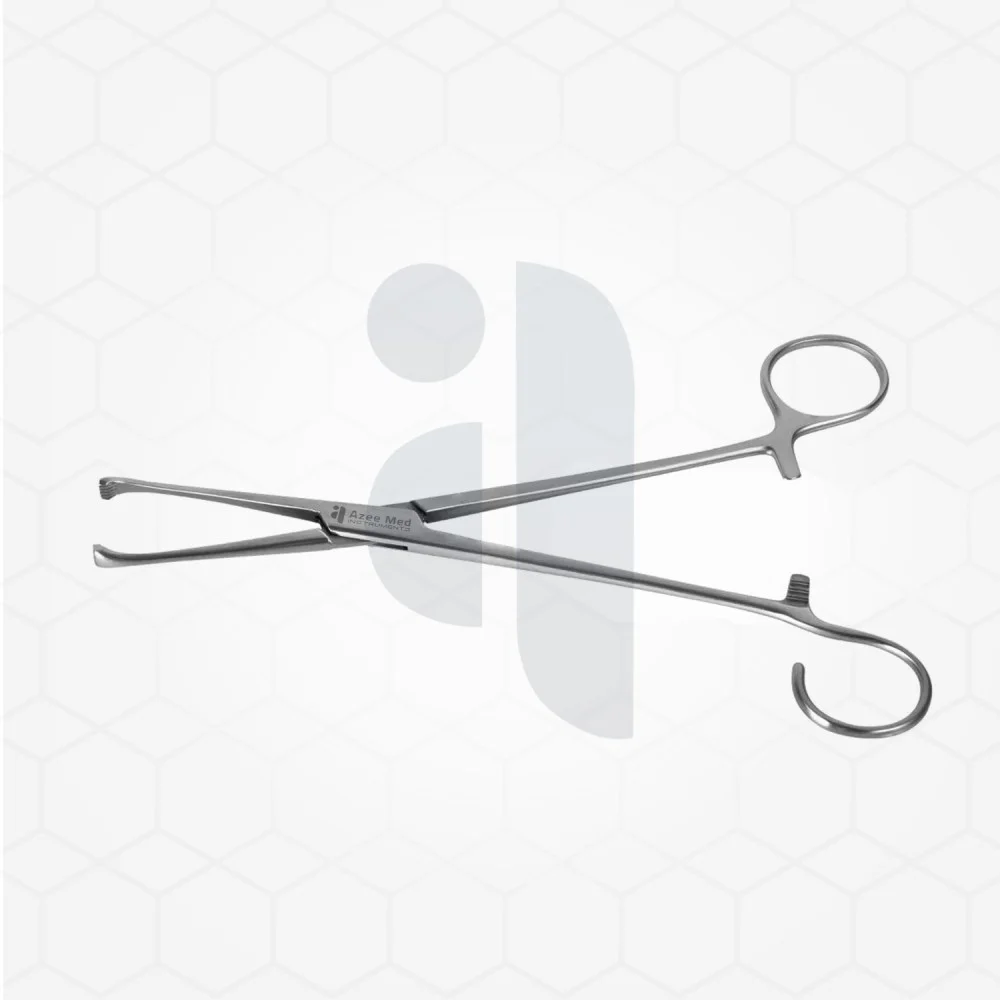Tonsillectomy, the surgical removal of the tonsils, remains one of the most common procedures in pediatric and adult care. While the procedure itself requires expertise and precision, the right surgical instruments are equally vital for a successful outcome. Among these, tonsil clamps stand out as indispensable tools.

What Are Tonsil Clamps?
Tonsil clamps are surgical instruments designed specifically to hold and stabilize the tonsils during a tonsillectomy. These specialized tools help secure the tonsils in place, preventing movement that could disrupt the delicate procedure. By offering a firm and controlled grip, tonsil clamps enable the surgeon to remove the tonsils with precision, minimizing tissue damage and ensuring that the surrounding structures remain unharmed.
The design of tonsil clamps allows them to grip the tonsils firmly while simultaneously applying gentle pressure to the surrounding blood vessels. This helps reduce bleeding during the procedure, an important consideration since the tonsils are highly vascular tissues.
Why Are Tonsil Clamps Important in Tonsillectomy?
The use of tonsil clamps during a tonsillectomy enhances the precision and safety of the procedure. Tonsillectomies can involve significant bleeding due to the blood vessels in the tonsillar tissue, and controlling this is paramount for a successful outcome. Tonsil clamps help manage this challenge by compressing blood vessels in the tonsils, reducing blood flow and limiting hemorrhaging. This not only ensures the safety of the patient but also allows the surgeon to work without the distraction of excessive bleeding.
Furthermore, these clamps provide stability during surgery, which is crucial for maintaining a clear field of view. By securely holding the tonsils in place, tonsil clamps allow the surgeon to work with minimal effort, providing more control over the surgical process and ensuring precise cuts.
Types of Tonsil Clamps
There are several different types of tonsil clamps, each designed to meet specific needs and preferences during the procedure. One of the most commonly used is the Ferguson tonsil clamp. This instrument is favored for its long, curved jaws, which provide excellent access to the tonsils, particularly in cases where the tonsils are large or positioned in difficult-to-reach areas. The Ferguson clamp offers reliable grip and control, ensuring that the tonsils are securely held in place throughout the surgery.
Another popular option is the Heany tonsil clamp. Known for its precision, the Heany clamp is designed to handle delicate tissue with care. It is typically used when a surgeon needs fine control and accuracy, making it ideal for more complex cases. The Adson tonsil clamp is also frequently employed for smaller procedures, where more delicate dissection is required. These clamps are known for their fine tips and ergonomic design, providing enhanced comfort and stability.
Key Features of Tonsil Clamps
Several key features make tonsil clamps effective in the operating room. The primary feature is their material composition. Made from high-quality stainless steel, tonsil clamps are designed to be durable and resistant to corrosion, ensuring that they can withstand repeated sterilization and prolonged use. Some clamps are further enhanced with tungsten carbide inserts, which improve the clamp’s grip and durability.
In addition to material quality, the ergonomic design of tonsil clamps is critical for reducing hand fatigue. Surgeons often perform tonsillectomies over extended periods, and a comfortable grip allows them to maintain control and precision throughout the procedure. Tonsil clamps are designed with smooth locking mechanisms and secure jaws, ensuring that they hold the tonsils without causing undue pressure or trauma to the surrounding tissue.
Conclusion
Tonsil clamps are vital instruments that play a crucial role in the success of tonsillectomy procedures. By securely holding the tonsils in place, reducing bleeding, and providing the surgeon with enhanced control, these tools ensure that the procedure is carried out with precision and minimal risk. With different types available, tonsil clamps can be chosen based on the specific needs of each patient, ensuring the most effective surgical approach. For surgeons, understanding the features and benefits of tonsil clamps can help improve patient outcomes, making them indispensable in the field of otolaryngology.
Comments on “Tonsil Clamps: Crucial Instruments for Tonsillectomy Success”